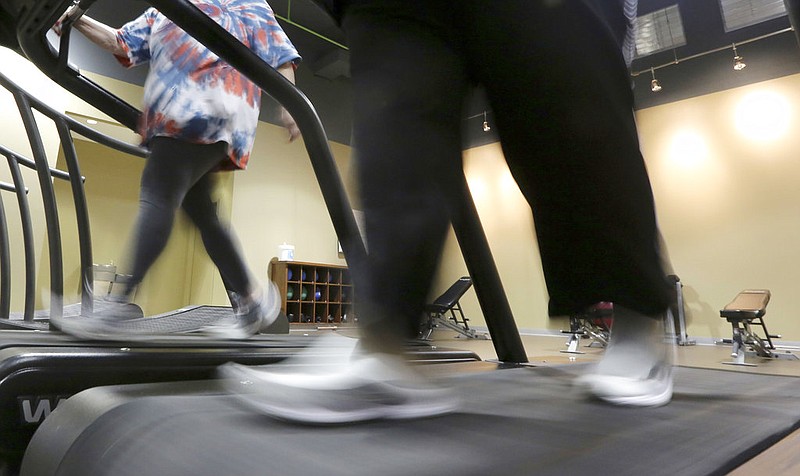You may have heard or even personally experienced that weight is harder to maintain as you age. While some people may never have this issue, it is a normal concern for most.
As we age, our bodies go through changes such as a decrease in resting metabolic rate and hormone changes. It is also common to become less active as we get older. These natural changes mean we need less energy (calories), fat is stored differently and muscle loss happens more rapidly. The good news is lifestyle changes can help you manage the aging process and feel your best.
One way to manage your health as you age is to get active and increase physical activity to help maintain lean body mass. Exercise can include cardiovascular activities such as brisk walking or jogging or strength/resistance training. Benefits to exercise include conditioning the heart and lungs, improving blood sugar and insulin response, and building muscle. Regular exercise can also aid in the management and prevention of arthritis, cardiovascular disease, depression, falls, high blood pressure, osteoporosis and metabolic health.
Another way to manage aging is to change up your eating habits. Adequate protein, fiber and heart healthy fats are very important to maintain muscle, maintain a healthy weight and fight diseases such as diabetes and cardiovascular disease.
Aim for .8-1 gram of protein per kilogram of body weight to maintain muscle mass and function. Lean sources of protein include (but are not limited to) eggs, lean beef, bison, venison, poultry without the skin and pork loin. Trimming visible fat from meat sources can help cut down on added saturated fat and calories. Beans, lentils, soy, nuts, seeds and low fat dairy products such as cottage cheese and Greek yogurt are also great sources of protein.
Choose carbohydrates carefully to increase fiber and decrease refined sugars. Aim for 25-30 grams of fiber per day. Choose whole grain foods such as whole grain breads, pastas and cereals. Decrease the amount of added sugar from sweetened beverages and packaged baked goods. Fruits and vegetables are a great source of fiber and can help keep you full.
Heart healthy fats help protect against cardiovascular disease, heart attack and stroke. Aim for three servings of unsaturated Omega-3 and Omega-6 fatty acids. Foods such as fish (tuna, salmon, mackerel), avocados, nuts, seeds (sunflower, pumpkin chia, ground flax) and oils (olive, walnut, sesame) are great sources of unsaturated fats.
Although our bodies go through changes as we age, it is never too late to build healthy habits to help manage. Try Mediterranean nachos for a hearty meal loaded with flavor.
Rachel Werner is a registered dietitian at SSM Health/St. Mary's in Jefferson City. She received her Bachelor of Science in dietetics from Missouri State University in 2016 and completed 1,200 hours of supervised practice in Jefferson City through Lenoir-Rhyne University's distance dietetic internship. During her internship, Werner had the opportunity to work alongside dietitians and other nutrition and health professionals in the Mid-Missouri community. She completed clinical experience at SSM Health/St. Mary's where she was offered a position and is currently employed as a clinical dietitian.


